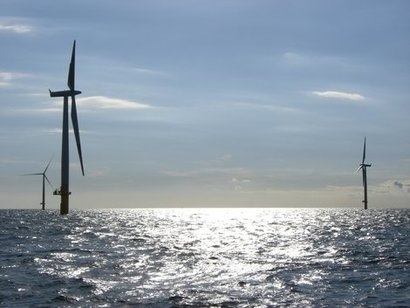
“Prices below £40/MWh (in 2011-12 money) are extremely low in the context of previous auctions” said James Brabben. “Even when converted to 2018 money, these equate to £45.3/MWh in 2023-24 and £47.5/MWh in 2024-25. This is still within the range of today’s baseload market prices currently trading at £45/MWh to £55/MWh. The prices are comparable with European offshore wind price benchmarks even though in GB, developers face additional risks and costs in project development and connection. The rapid fall in cleared prices for offshore wind since the first CfD allocation round is profound, amounting to a 66 percent reduction in less than five years. Whatever way you look at it, this is a landmark moment”.
Brabben added that the captured wholesale price of wind technologies will fall as more projects come online and that this will lead to very low wholesale prices at times of modest system demand in future.
By 2023-24, this cannibalisation effect will have grown. Cornwall Insight’s analysis shows that regular levy payments may be still be needed for these wind projects during the life of their CfD contracts. So, while it is right to say these contracts represent an outstanding deal for consumers, they are not necessarily guaranteed to be cost-free just yet.
However, it isn’t all about offshore wind, as Remote Island Wind (RIW) projects have now been awarded, for the first time, across Orkney, Lewis and Stornoway. This means that onshore wind contracts have been awarded CfDs for the first time since the original CfD allocation round.
Brabben said that the journey of remote island wind projects to winning CfDs has not been easy and that each project will have had to take account of the costs of grid connection and timing of planned island transmission links in their bidding, as well associated network charges. Results show that for projects awarded on Lewis and Orkney, the capacity levels are below the threshold set by Ofgem to trigger new transmission links for both islands.
“The results reveal some clues about the auction dynamics” Brabben said. “As the auction is pay-as-clear, we can say with confidence that some successful projects would have bid below the cleared prices. However, as bidding remains confidential, we won’t ever know for sure who, or by how much. The 6 GW capacity cap introduced by BEIS for the auction was the constraint, rather than the budget. The capacity clearing level at 5.7 GW suggests that a large-scale project above 300 MW breached the 6 GW cap and forced the auction to clear. Again, we don’t know for sure which project but given the scale, it was likely to be an offshore wind project, or a large remote island wind project. While some developers will be absolutely ecstatic, spare a thought for those without a contract. There is more than 2 GWs of offshore capacity that we think applied but missed out. The question will be whether this rolls forward to provide immediate competitive tension in the next CfD round anticipated in 2021”.
The striking results create a number of follow-on questions for the sector and successful applicants. The first will be to follow the outcome of the Banks Group JR on the exclusion of onshore wind from this round, and its impact on CfDs just awarded. Secondly, assuming all winners sign their CfDs, all eyes will be on whether projects achieve their Milestone Delivery Dates. Thirdly, the government may want to consider if the grouping of technologies in future auctions should be reviewed. And finally, at these prices, BEIS may need to reconsider the balance of technologies and the ultimate system design they believe is appropriate to meet net zero.
“Many in the industry would argue, if renewables are this cheap, we should be building as much of it as possible” Brabben said.
For additional information:

